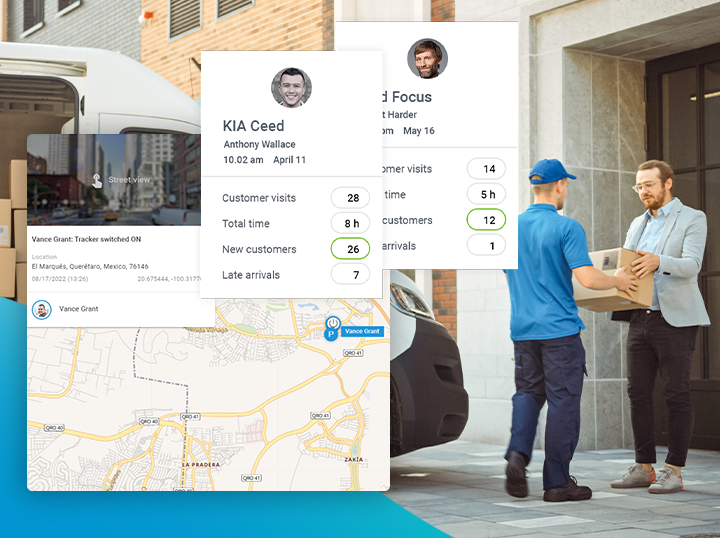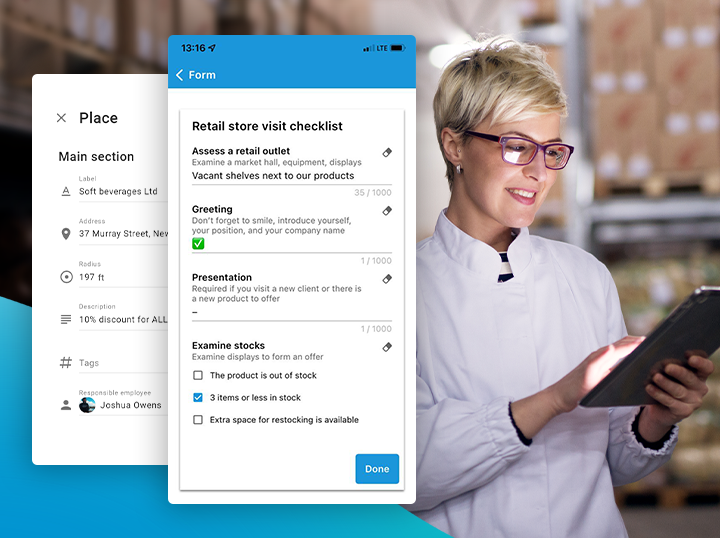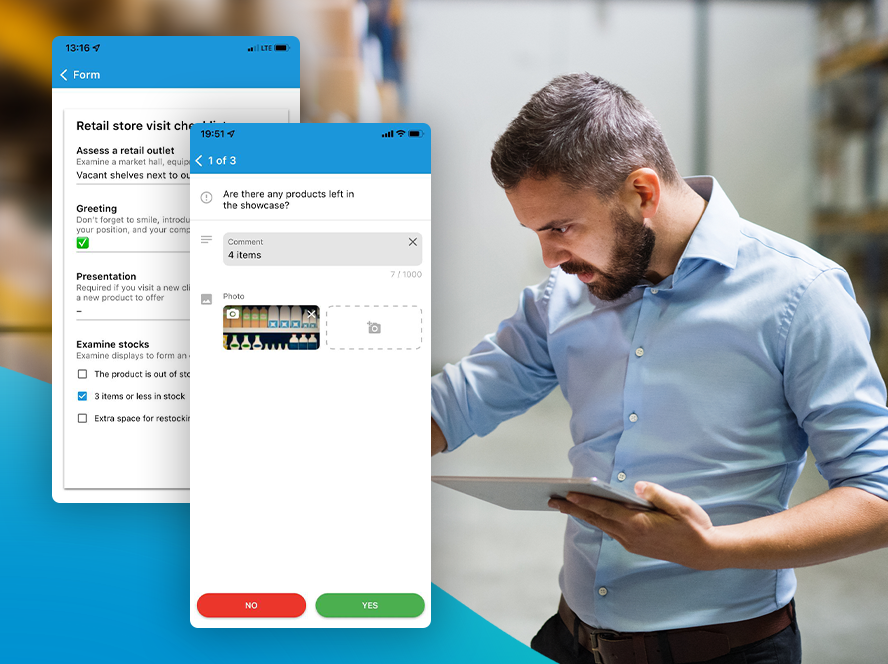To reduce last mile delivery costs for small businesses it’s essential to run an organized, focused last mile business. We’ve curated a list of processes that can help cut costs so you can focus on customer satisfaction and business growth.
- Tight logistics planning, or the art of lowering last mile delivery costs
- Plan better routes to reduce last mile delivery costs
- Choose the right vehicles to achieve low cost shipping for small businesses
- Training drivers to become more efficient can lower delivery costs
- Automate manual processes to save time and cut delivery costs
- Leverage two-way communications to meet customer expectations
- Use data-driven insights to inform your business’s operations
Creating efficiency is the goal of any healthy business, and creating efficiency while lowering costs is especially important for small businesses in the last mile delivery space.
In an industry already fraught with complexities that can result in inefficiencies, small delivery businesses just don’t have the margin of error that larger organizations might have.
At the same time, last mile delivery small businesses are customer-centric, meaning the more they can focus on their customers and give them their time, the better they’ll be at serving them and retaining them in the long run.
That said, reducing last mile delivery costs for small businesses is imperative, and a lot of last mile delivery companies simply don’t know where to start. That’s why we’re here to help!
At B2Field, we’ve spent over a decade serving last mile delivery small businesses around the world, trying to understand how they work and what they need to help reduce last mile delivery costs. Here are some of the practices you might consider:
- Tight logistics planning
- Plan routes with GPS tracking
- Choose the right vehicles for the job
- Train drivers to become efficient
- Automate manual processes
- Communicate with teams and customers
- Use data to understand and inform business operations
We’ll discuss each of these points in more detail, below.
Tight logistics planning, or the art of reducing last mile delivery costs
To reduce last mile delivery costs for your small business, the first order of priority is planning because proper planning creates speed, and speed results in lower delivery costs.
This is where your logistics manager comes into play. Hopefully, this person works as part of a team who organizes the orders for the drivers, and double checks that everything is correct before the deliveries are loaded onto vehicles.
Not only do the orders need to be correct (and verified as correct), they should also be arranged in the correct order according to the delivery driver’s route for the day to ensure that the right delivery is loaded (and then offloaded) in order, according to the delivery route.
This ensures that the driver doesn’t have to fumble around in his/her vehicle to find the right delivery, which wastes time and, of course, creates inefficiencies that can result in missed or late deliveries that ultimately frustrates customers and hurts your business’s bottom line.
Plan better routes to reduce last mile delivery costs
Route planning is one of the most efficient, and, therefore, effective ways to reduce last mile delivery costs.
The amount of time that goes into planning manual routes versus the amount of time it takes to have a software application do it is the difference between hours and minutes. That time adds up quickly, and that’s just in the office.
In the field, driving extra, unnecessary miles takes more time, burns more fuel, and wears out your delivery fleet faster.
Last mile delivery software solutions, like B2Field, use algorithms to plan the most quick and efficient routes, taking into account not just the route, but the delivery capacity, delivery windows, and driver speeds.
The app factors all of these variables into the most efficient delivery solution that saves the business time and fuel.
Choose the right vehicles to achieve low cost shipping for small businesses
Ensuring that you have the right vehicles for your team could translate into optimizing capacity. If your vehicles are constantly over capacity or under capacity, that should be a clear indication that something is wrong and it might be costing you.
Vehicles that are filled over capacity can result in a disorganized load, which has your driver scurrying to get the right delivery to the right location, wasting time and money for your business as well as taking a toll on your delivery drivers’ morale.
A vehicle that is constantly under capacity is simply wasting fuel. Also, the right sized vehicles determine the route your vehicle is able to take based on the geography of your delivery zone. If you have a large vehicle in a big city, it will be hard to park, maneuver under bridges, and other obstacles that can result in extra miles, extra fuel, and the extra time it takes to complete deliveries.
Training drivers to become more efficient can lower delivery costs
Well trained, confident employees are happier and do better work. This can result in a lower turnover rate of drivers, which in itself can have an effect on lowering business costs. Think of all the saved time, energy, and resources onboarding new employees.
Some small delivery businesses set up incentive programs for the drivers who accomplish the most efficient driving practices: i.e. staying on schedule, and driving the speed limit.
In B2Field, all driver data can be viewed in the analytics dashboard and drilled down by driver, making the comparison process painless.
Automate manual processes to save time and cut delivery costs
Automating processes that were formerly manual allows your business to save time and money, potentially allowing you to grow your business in a sustainable way.
One of the best ways to automate last mile delivery processes is to implement software that can help you track your assets, monitor driver performance, and monitor and improve fleet performance.
Being able to save time on manual routing will give you the time you need to focus on growing your delivery company and taking it to the next level.
B2Field helps last mile delivery businesses do much more with less by automating the route planning process, leveraging real-time GPS to track field operations and monitor driver performance, and report on all the business data you can use to tighten up operations by making informed business decisions backed by evidence.
Leverage two-way communications to meet customer expectations
Healthy communication is important for every business, and there are many areas where communication is important both internally and externally for last mile delivery businesses.
Clear communications keep your teams on the same page and help inform customers where their deliveries are in the delivery process. In both situations the objective is to avoid confusion, set expectations, and ensure everyone is happy.
For drivers, having set routes planned automatically can help avoid back and forth with dispatchers, since all they have to do is follow the directions in the app, but if there’s ever a priority delivery added to their route, in-app communication tools that enable phone calls and SMS can be used to send and receive updates in a real-time.
Also electronic proof of delivery (ePoD) informs the business and customers of when packages were successfully delivered, reducing the problem of late or lost packages. All of the data is sent automatically into the system for reporting and analysis so you can track delivery success rate over time, even by individual drivers.
For customers, you can send automatic updates about their deliveries so they’re always in the loop, which reduces the amount of phone calls you receive asking where their deliveries are, which translates to providing excellent customer experiences that keep customers coming back.
Use data-driven insights to inform your business’s operations
Business transparency is key for last mile delivery small businesses. It allows you to stay ahead of issues and identify inefficiencies and bottlenecks and work to solve them before they become larger issues.
You can also use accurate business data to monitor operations over time to set benchmarks while also looking ahead proactively to discover opportunities for improvement.
With B2Field, last mile delivery small businesses monitor key performance indicators (KPIs) like success rates, on-time deliveries, service times, feedback scores, distances travelled, and more. Data can be filtered by driver, days of the week, months, or even by the hour.
You can export custom reports whenever you want and send the most up-to-date and relevant information to the correct stakeholders, anytime, anywhere.
In the end, having control over your business to influence the right areas starts with the tools you need to gather that information so you can make decisions based on the evidence.
With last mile delivery apps like B2Field, you have a great opportunity to reduce last mile delivery costs by managing last mile operations better than the day before — which can result in real cost savings which gives you the opportunity to focus on strategic business growth, even if improvements start small.
Want to learn more about how B2Field last mile delivery software helps SMB delivery businesses thrive? Check out our website.






















